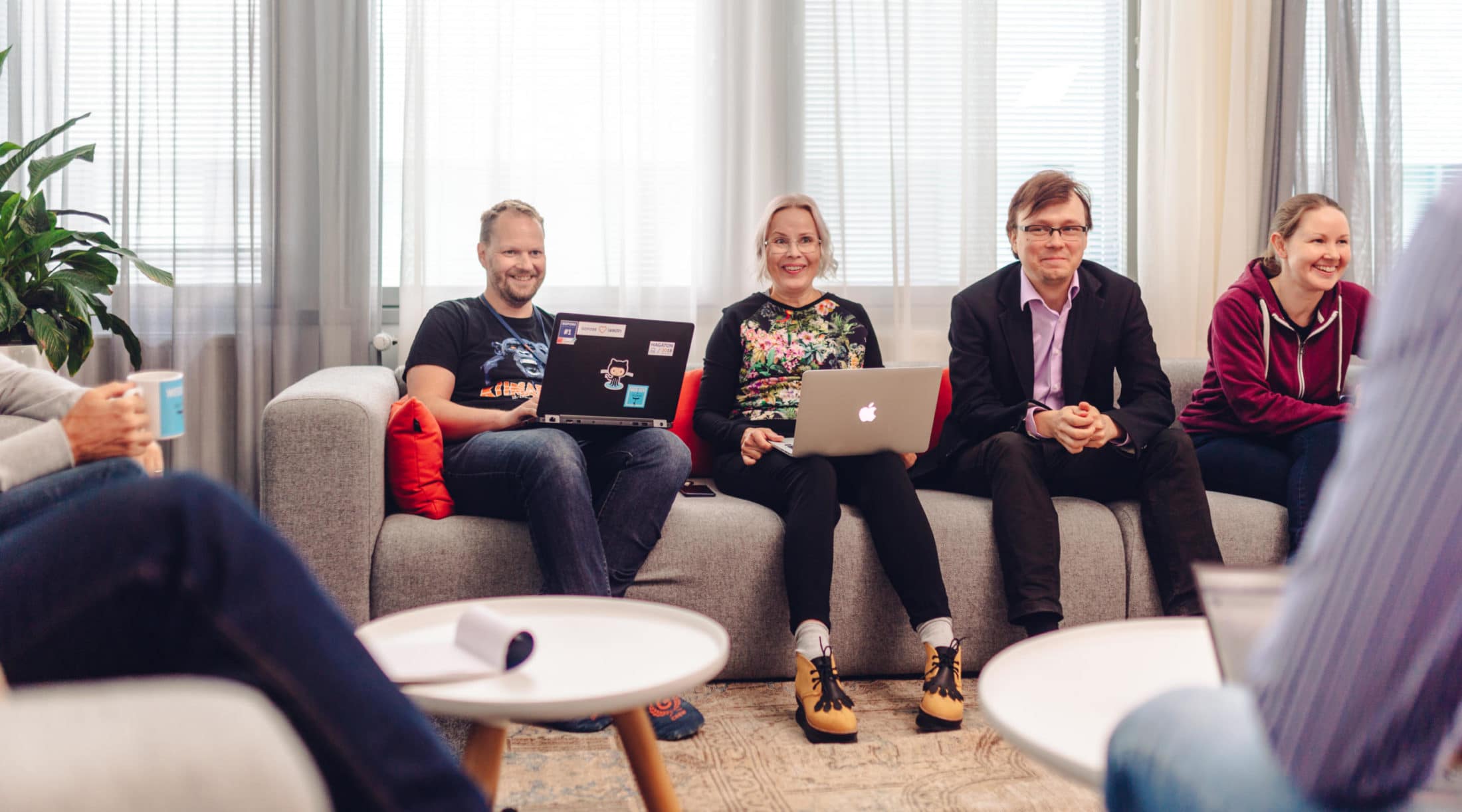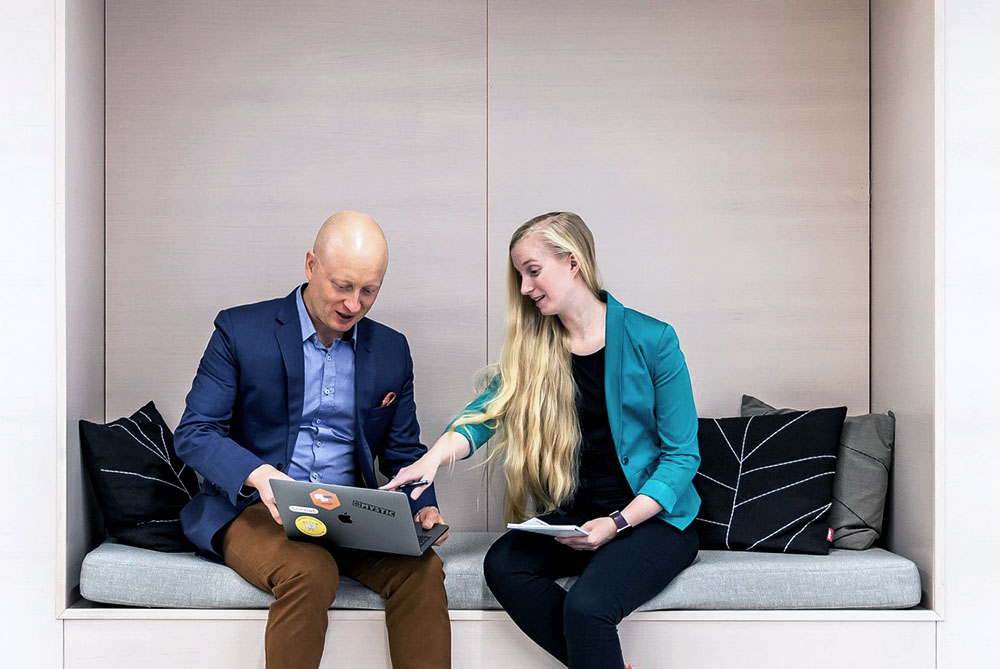Have you ever been really into your work but didn’t have anybody who shared your enthusiasm when you started gushing about it? Do you work as a specialist in a multi-functional team and don’t seem to have direct support for challenges related to your specific domain? At Gofore there might be a guild that could help, or maybe you need to start one?
Why?
About a year and a half ago the project I was working on restructured which lead to our scrum master leaving and me transitioning to the role of scrum master. Our product owner was also replaced by a team of three product owners. Simultaneously the project goal changed from a proof of concept to get a release of the product out in three months so the number of developers was also ramped up. Because our team was made up of experienced developers already familiar with the product I found myself in a situation where most of my time was focused on getting the product owners on track with their roles. After a couple of sprints I realized that I hadn’t had a chance to even assign myself a ticket, I had transitioned to a full-time scrum master position. While I have several years of experience as working as scrum master and developer I quickly realized that being a dedicated scrum master was a very different role.
My perspective drifted away from the product I had been building in the proof of concept phase and I started focusing on how the team was working not what it was working on. I wasn’t as interested in what decisions the product owners were making but on how to get them to make any decisions at all. And then I realized I was the only person on the team focusing on these issues. I started wondering how similar issues were handled in other projects at Gofore and how I could ask our more experienced scrum masters, product owners or project managers about these issues, so I invited them to lunch.
How?
Since I had been working in project management roles earlier I had a company credit card and reserved a table at a nearby restaurant for lunch and invited everybody working at the Helsinki office who I knew had worked or was working in a scrum master role. I think the offer a company-sponsored lunch combined with curiosity led to around seven people coming and we shared news and thoughts about our project work. Since everybody didn’t have a chance to talk about their project I decided to have another lunch or breakfast the following month and I promised to organize a doodle for the date. This quickly became a monthly thing.
I didn’t ask anybody’s permission to organize these lunches, I just used my own judgement that they were needed. Being true to the Gofore spirit of transparency I was as open about the costs and the time I spent organising the guild lunches as I could be. From the beginning, our lunches were a bit fancier than your regular working lunch, because I thought that it is important to communicate that we as a company value learning from each other. Also having the meetings outside the office gave a sense of detachment that you don’t get in a familiar meeting room.
I happened to mention about these lunches we were having to our Lead Coach Heini while I was visiting our Tampere office and she informed me that I had started a guild.
What?
On the train, on the way back from meeting Heini in Tampere I changed the name of the page recording our lunches in our confluence to the Agile Leadership Helsinki Guild. There are some other guilds in our company but their role hasn’t been strictly defined. Each guild is a bit different in how they work, but they all relate to professional development. Ever since the beginning, sharing and sparring project-related challenges have been a staple of our lunch meetings. At some point, I stopped doodling and we agreed that our lunch date would be on the last Thursday of each month. It was easier that way, and knowing the lunch dates several months earlier makes it easier to reserve the time needed to be away from the client.
We started having short introductions to agile related subjects at the beginning of the lunches. This was a great way to share experiences when somebody attended a conference or external training. At some point, Anu joined me as the champion for the guild and having a dedicated person with whom to share guild related ideas with made guild work a lot more fun. We started organizing training sessions outside of lunches that were directed to guild members as well as open for others at Gofore. The latest thing our guild has done has become a platform for helping members go to conferences and on external training courses.
I gave up the position as guild champion at the beginning of the year and the current champions are taking the guild forward and doing stuff I didn’t have time for. I am still actively involved and enjoying having a community to reflect my project work, Agile Finland work and Agile Transformation and Lean capability work.
Lessons learned from starting a guild at Gofore
While I had a useful experience from working with volunteers in the scouts and in university organizations, this was the first time I had started a completely new organization or community. This gave me the chance to reflect on my previous experience in volunteer leadership, combined with formal academic knowledge from Knowledge Management studies at university and professional project management experience. At Gofore we have many social clubs (or Glubs as we call them) where like-minded colleagues come together to discuss everything from investment opportunities to the latest beer to be launched. Guilds help unite people over professional interests compared to glubs leisure focus. If you have an interest, professional or extracurricular, starting a community around it at Gofore is a good way to network with your colleagues. There are now many guilds covering a wide variety of software solutions and related fields like design. Below are my experiences of setting up a guild for Agile leadership, but they apply for setting up glubs as well.
- Having a personal need to fulfil when starting a new project helps when you need motivation or need to pivot.
- A guild is a community so starting one is really hard.
- Starting a community is basically a culture change or creation project.
- When starting aim for consistency with minimal effort.
- You can never over-communicate or over promote guild related events or issues.
- Culture change projects need a champion so don’t worry about things being personified to you.
- Because it’s voluntary don’t be afraid to make choices and do the work even when you don’t get feedback.
- It is great to have a community for sparring your project work and personal development.
- The strength of the guild comes from the fact that even though participation is work time it still voluntary so people participate from their intrinsic motivation.
- The biggest obstacle for people participating in professional self-development work like guilds is loyalty to the customer and interesting customer projects.
I believe it is important to keep up to date with developments in your professional area of interest. Gofore guilds are a great way to, not only keep up to date with professional developments but also to network with like-minded colleagues. It’s great that Gofore actively support and encourage guilds and glubs. Connecting with your co-workers over shared interests is a great way to contribute to the collaborative and supportive working environment.



